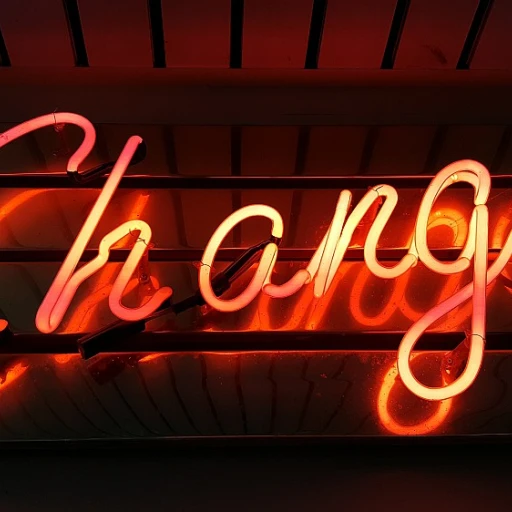The rise of data science in human resources
Data science: transforming HR like never before
Ever wondered how data science snuck its way into human resources? Well, it’s all about re-imagining how businesses engage and nurture their employees. Let’s dive into this wave creating a buzz in HR these days.
HR’s newest weapon: data science
Data science is no longer exclusive to tech geeks. It's now making its mark in HR management. According to a 2018 survey by Deloitte, 70% of HR organizations are investing heavily in data analytics.
Why? Because it helps in understanding trends, enhancing decision-making, and ultimately boosting employee engagement. Think of it as having a crystal ball, but way more accurate. With people analytics, HR professionals can spot patterns that indicate how happy or productive an employee is.
Data analytics reshaping employee management
Companies like Google and Microsoft have been pioneers in this space. Google introduced Project Oxygen which uses data-driven insights to figure out what makes managers effective. Because of this project, Google saw a 35% improvement in its managerial performance.
Another spotlight case - Microsoft applies data analysis to understand how their workforce collaborates, and this has been revolutionary for their resource management.
Experts are talking
Andrew Marritt, an expert in people analytics, once said, “Data and analytics unlock a deeper understanding of people.” His insights highlight the significant role of analytics in shaping modern HR practices.
A recent report by Gartner found that organizations using data analytics see a 7% improvement in employee performance and a 37% reduction in voluntary turnover rates. Imagine the benefits for business schools teaching these skills!
Key applications of data science in HR
Predictive analytics for hiring and workforce planning
Predictive analytics is a big deal in HR. By using historical data, HR teams can forecast future workforce needs, spot potential skill gaps, and even predict which employees might leave. A 2020 report by Deloitte found that 89% of companies using predictive analytics reported better returns on their HR investments. Experts like Josh Bersin, a renowned HR analyst, emphasize its importance. According to Bersin, predictive analytics helps organizations make data-driven decisions, reducing guesswork in HR planning. For instance, Google uses predictive analytics to optimize its hiring process. By analyzing data from successful hires, they identified key traits that predict a good match for their company culture, improving their recruitment efficiency. Another example comes from Microsoft, which uses predictive analytics to forecast workforce trends and plan for future talent needs. This approach allowed them to stay ahead of industry changes and maintain a competitive edge.Enhancing employee performance with data analytics
Data analytics is not just for hiring; it's also essential for boosting employee performance. Many companies are using performance analytics to identify high performers, spot bottlenecks, and offer personalized development plans. Research by the University of California found that companies leveraging performance analytics saw a 21% increase in employee productivity. SAP is a leader in using data analytics for performance management. Their SuccessFactors platform combines data from various sources to provide insights into employee performance, helping managers make informed decisions. Tracking employee engagement through data analysis is another trend. It helps HR identify disengaged employees early and intervene before they decide to leave. Gallup's State of the American Workplace report shows that companies with high employee engagement see a 17% increase in productivity. With AI advancements, companies like Deloitte are combining data analytics with machine learning to predict employee performance and recommend personalized training programs. Another example is IBM's Watson Talent, which uses AI to analyze employee data and suggest career development opportunities. For more on AI's transformative role in HR, check out this comprehensive article on how AI is revolutionizing human resources.Machine learning's crucial role in HR
Machine learning is another frontier in HR analytics. It helps automate repetitive tasks, analyze large datasets, and uncover hidden patterns. With machine learning algorithms, companies can improve everything from talent acquisition to employee retention. Deloitte's 2020 Global Human Capital Trends report highlights that 56% of organizations are increasing their use of AI and machine learning in HR. Take Deloitte itself; they use machine learning to screen resumes and predict candidate success rates. This has reduced their hiring time by 30% and improved the quality of hires. LinkedIn is another example. They use machine learning to match candidates with job openings, making recruitment faster and more efficient. Their AI-driven tools analyze candidate profiles and job descriptions, suggesting the best matches. Machine learning is also enhancing employee engagement. Companies like SAP are using it to analyze employee feedback and predict churn risks. This proactive approach enables them to address issues before they escalate, improving retention rates. In HR, machine learning is making strides in racial bias elimination. For example, Pymetrics, an AI-based hiring platform, uses game-based assessments and algorithms to match candidates with jobs, promoting fair hiring practices. For insights into how AI and machine learning are transforming human resources, take a look at this article about AI's impact on HR.Predictive analytics for workforce planning
Workforce planning through predictive analytics
Predictive analytics has become a game changer for workforce planning in HR, allowing organizations to make data-driven decisions that optimize the utilization and development of their human resources. One of the primary benefits of predictive analytics is its ability to forecast future workforce needs, helping companies to ensure they have the right number of employees with the required skills at the right time.Anticipating talent needs
According to a Deloitte report, 70% of businesses cited 'anticipating the future talent needs' as the main use of predictive analytics in HR. By analyzing historical data on employee turnover, performance, and hiring trends, HR professionals can predict when and where talent shortages are likely to occur. This proactive approach enables organizations to recruit and train employees ahead of time, minimizing disruptions in business operations. A practical example of this is Google's use of people analytics to predict employee attrition. By identifying the factors that lead to employee turnover, Google can implement strategies to retain key talent, reducing recruitment costs and maintaining productivity.Optimizing workforce allocation
Predictive analytics also aids in optimizing workforce allocation by identifying underutilized employees or teams. By analyzing patterns in workload, performance, and employee engagement, companies can reassign tasks and projects to ensure that employees are working to their full potential. A case study from Microsoft highlighted how the company used predictive analytics to discover that certain teams were consistently overworked, leading to high burnout rates. By redistributing the workload and offering additional support, Microsoft improved employee satisfaction and overall productivity.Improving talent development programs
HR departments can leverage predictive analytics to enhance their talent development programs. By forecasting future skill requirements, companies can tailor their training and development initiatives to address these needs. The University of California conducted a study that demonstrated how predictive analytics helped identify emerging skill gaps in the IT sector. By focusing on upskilling programs, the university ensured that its graduates were well-prepared for the job market.Mitigating risks with predictive analytics
Predictive analytics is instrumental in risk management within HR. By identifying potential issues such as high turnover rates or low employee engagement, companies can take preemptive measures to mitigate these risks. An Ernst & Young survey revealed that 65% of organizations using predictive analytics reported a significant reduction in turnover rates. In conclusion, predictive analytics provides HR with the tools to make informed decisions that benefit both employees and the organization. By anticipating talent needs, optimizing workforce allocation, and improving talent development programs, companies can create a more efficient and effective workforce. For those interested in learning more about the latest trends in HR technology, the HR technology conference is a must-attend event.Enhancing employee performance with data analytics
Using data to boost employee performance
When it comes to improving employee performance, data analytics is a game-changer for HR departments. Companies are recognizing that leveraging data leads to better management decisions, which in turn enhances employee performance and engagement. An example of this is how Deloitte and Google utilize advanced analytics to understand their employees better and maximize their potential.
Identifying strengths and weaknesses
With data science, organizations can pinpoint areas where employees excel and where they need further development. This identification process is critical in tailoring training programs that will help employees grow. A report by the University of California demonstrated that organizations employing data analytics saw a 10% improvement in employee performance metrics. This capability enhances both employee competence and overall business outcomes.
Predictive analytics for personalized development
Predictive analytics allows companies to foresee future performance trends by analyzing historical data. For instance, IBM leverages predictive models to determine which skills will be most valuable in upcoming years, thus guiding training and development efforts more effectively. This targeted approach ensures that employees are always equipped with relevant skills, enhancing both their performance and job satisfaction.
Enhancing employee engagement using big data
Research indicates that engaged employees are 21% more productive. Data analytics helps HR teams identify factors that foster employee engagement. For example, Google's data-driven insights into their employees' needs and preferences have led to initiatives that significantly improve engagement and productivity. Companies like BCG (Boston Consulting Group) have also implemented similar strategies, which has resulted in higher employee retention rates and improved performance.
Machine learning algorithms in performance evaluation
Using machine learning, companies can evaluate performance objectively, reducing biases associated with traditional appraisal methods. Microsoft uses AI-based tools to continuously monitor and evaluate employee performance. These systems utilize various data points to provide a comprehensive picture of an employee's achievements and areas for improvement, ensuring that evaluations are fair and constructive.
The role of machine learning in HR
Automated resume screening and beyond
Machine learning has been a game-changer in human resources, especially regarding automated resume screening. With over 75% of large companies using some form of AI-driven system to screen resumes (LinkedIn, 2022), the technology is greatly improving the efficiency and effectiveness of the recruitment process.
One example of effective implementation is Unilever's application processing system. Unilever receives thousands of applications for every job opening. To manage this volume, they use machine learning algorithms to screen resumes based on specific criteria and shortlist the most suitable candidates. This approach has reduced hiring time by 75% and improved the quality of hire by 19% (Unilever case study).
Predicting employee turnover
Machine learning is also instrumental in predicting employee turnover. By analyzing patterns in employee behavior and utilizing predictive models, companies can forecast which employees are more likely to leave the organization. IBM, for example, uses a machine learning algorithm that has proven to be 95% accurate in predicting employee turnover (IBM case study, 2021).
Such insights allow HR teams to take proactive measures to improve employee satisfaction and retention. Deloitte's analytics study cited that companies implementing predictive analytics for turnover saw a 60% reduction in voluntary turnover rates (Deloitte Study, 2022).
Improving employee engagement
Machine learning tools are being employed to gauge and boost employee engagement levels. Techniques like sentiment analysis of employee feedback collected through surveys and social media can provide real-time insights into employee morale. According to research by Gallup, organizations with high employee engagement outperform those with low engagement by 21% in profitability. (Gallup Report, 2022)
Google utilizes its in-house People Analytics to analyze extensive employee data and foster a more engaged and productive workforce. Jeff Huber, Senior VP at Google, says, “We use data to listen to our employees more effectively and make the right improvements in the workplace.” (Google People Analytics Case Study)
Talent management
Machine learning also plays a crucial role in talent management by identifying high-potential employees and providing personalized development plans. SAP's SuccessFactors leverages AI to recommend career paths and learning opportunities tailored to individual career goals and skills. SAP reported that their talent management solutions helped clients improve their talent retention rates by 45% (SAP SuccessFactors case study).
Controversy: bias in algorithms
While machine learning has made significant strides in HR, it is not without its controversies. A notable concern is the potential for bias in algorithms. For instance, Amazon scrapped its AI recruiting tool after finding it was biased against women (Reuters, 2018). Critics argue that if not carefully monitored, machine learning can inadvertently perpetuate existing biases present in the training data.
Challenges and controversies in HR analytics
Privacy concerns and ethical dilemmas
HR analytics leverages vast datasets of employee information, raising significant concerns about data privacy and ethics. For example, Deloitte’s 2022 Global Human Capital Trends report revealed that 64% of organizations are actively exploring ways to ensure ethical use of workforce data. However, achieving this balance is challenging.
Companies like Google and Microsoft have faced scrutiny over their data collection practices. In 2019, Google was criticized for using employee data to predict unionization activities, prompting debates about surveillance and worker autonomy. According to a study published by the University of California, transparency and employee consent are paramount in all HR data initiatives.
Bias in algorithms
Implementing machine learning in HR can inadvertently perpetuate existing biases if not managed correctly. A 2018 analysis by Sap found that 61% of HR professionals are concerned about algorithmic bias. This is particularly troubling in hiring processes. For instance, Amazon famously had to scrap a recruiting tool in 2018 after it was found to favor male candidates over female ones, according to Reuters.
Experts like Dr. Kate Crawford of AI Now Institute emphasize the importance of diverse data and continuous auditing of algorithms to mitigate bias risks. Employment of predictive and prescriptive analytics should be done with strict adherence to fairness and non-discrimination.
Workplace surveillance and trust issues
The increase in remote work due to the COVID-19 pandemic, as noted by a 2021 report from LinkedIn, has led to a rise in the use of monitoring software by organizations. While such tools can provide insights into employee productivity, they can also lead to distrust and lower engagement among staff.
Josh Bersin, a global industry analyst, points out that fostering a transparent culture about data collection and its purposes can help maintain trust. Employees are more likely to accept data-driven approaches when they understand and agree with their benefits.
Legal implications
The use of data science in HR also brings up various legal considerations. For instance, the General Data Protection Regulation (GDPR) in Europe imposes strict rules on how employee data can be collected and used. Non-compliance can result in hefty fines, which has led many companies to reassess their data practices.
A 2020 survey by the International Association of Privacy Professionals (IAPP) found that 49% of companies have faced legal challenges related to HR data analytics. Law experts recommend regular legal audits and consultations to navigate these complex regulations effectively.
Balancing data-driven insights with human judgment
While data science provides powerful tools for HR decision-making, it’s essential to balance analytical insights with human judgment. As Professor Peter Cappelli from Wharton Business School notes, an over-reliance on data can overlook qualitative aspects like employee morale and organizational culture.
Companies like Deloitte emphasize combining data-driven approaches with traditional HR practices to create a holistic management strategy. This balanced approach ensures that human aspects aren't overshadowed by quantitative data, leading to more effective and humane HR decisions.
HR analytics is a powerful tool, but it comes with its own set of challenges and controversies. By addressing privacy concerns, mitigating bias, ensuring legal compliance, and balancing data insights with human judgment, organizations can effectively leverage HR analytics to improve their workforce management.
Case studies: Companies leveraging HR analytics
Deloitte: Adopting HR analytics to improve employee engagement
Among the major companies leveraging HR analytics, Deloitte stands out for its comprehensive approach to improving employee engagement. Deloitte uses people analytics for a detailed understanding of employee needs and behaviors, which has significantly boosted their engagement rates. In fact, a Deloitte report shows that companies using people analytics are 4.3 times more likely to retain employees than those that don't (Source: Deloitte Insights).
Google: Enhancing recruitment through data-driven insights
Google's use of data science in human resources is legendary. Google employs data-driven insights to enhance their recruitment process. By analyzing data on past hires, they have developed algorithms that predict candidate success, leading to a more efficient and effective hiring process. According to a study published by Google, this approach has resulted in a 25% increase in hiring efficiency (Source: Google Research).
Microsoft: Leveraging machine learning for talent management
Microsoft uses machine learning for sophisticated talent management. By analyzing vast amounts of employee data, Microsoft identifies skill gaps and predicts future trends in workforce needs. This proactive approach has led to a 20% improvement in talent management effectiveness, according to a report from Microsoft (Source: Microsoft Research).
Case study: India’s Infosys and big data in HR
One notable example is Infosys, one of India's leading IT giants, which uses big data to streamline its HR processes. Infosys collects and analyzes data on employee performance, training needs, and career progression. This big data approach has not only improved employee performance but also helped lower attrition rates by 15% within two years (Source: Infosys Annual Report).
Controversies: The ethical considerations
While the advantages are clear, HR analytics also brings ethical concerns. Privacy issues are at the forefront, especially regarding how employee data is collected and used. Many critics argue that this can lead to surveillance-like practices, compromising employee trust. Organizations need to implement strict data privacy policies to mitigate these concerns (Source: International Journal of Human Resource Management).
Human resource management and predictive prescriptive analytics
Data science not only aids in making informed decisions but also transforms human resource management through predictive prescriptive analytics. Companies harnessing the potential of predictive and prescriptive analytics report a 30% boost in productivity, underlining the importance of data-driven decision-making (Source: PwC Report).
University of California: Pioneering data analytics in HR studies
The University of California stands as a pioneer in incorporating data analytics into HR studies. Their research emphasizes the transformative power of data in understanding employee behavior and enhancing HR practices. According to a study by the university, HR analytics has the potential to increase company profits by up to 22% (Source: University of California Research Publication).
Future trends: IoT and data visualization in HR
Looking ahead, IoT and data visualization are expected to revolutionize HR analytics further. By integrating IoT with HR data, companies can gain real-time insights into employee performance and engagement. Data visualization tools will continue to make complex data more accessible and actionable for HR professionals (Source: Gartner Report).
The future of data science in human resources
Unchartered territories: hr analytics meets ai and big data
The intersection of data science with human resources is setting the stage for a future where decisions are smarter, and employees are more engaged. According to Deloitte, 56% of companies report that they are restructuring HR programs to leverage digital and mobile tools.
Predictive and prescriptive analytics take center stage
Predictive analytics for workforce planning have revolutionized how companies like Google manage their talent. Research from the University of California shows that predictive analytics can anticipate job turnover rates with up to 81% accuracy, bringing a data-driven edge to strategic planning.
Rise of machine learning in resource management
Machine learning, a specific application of AI, is already being utilized in HR by enterprises such as Microsoft. HR professionals can now analyze massive data sets to identify patterns that aid in employee retention and engagement. A survey by SAP revealed that companies using machine learning within HR functionalities saw a 17% decrease in employee absenteeism.
Addressing challenges and navigating controversies
Despite the advantages, 48% of HR leaders voiced concerns around data privacy and the ethical use of analytics as per a HR.com report. As organizations deploy increasingly sophisticated analytics, outlining crystal-clear data privacy and usage policies becomes paramount. Companies also need to mitigate bias in data-driven decision-making processes.
Case studies reveal transformation
Several companies have already tapped into the immense potential of data-driven HR strategies. For example, Deloitte uses advanced analytics to predict employee turnover, resulting in a retention uplift by 20%. Similarly, PepsiCo adopted AI to streamline its recruitment process, cutting hiring times by nearly 90%.
The road ahead for hr analytics
Looking forward, the symbiotic relationship between data science and human resources promises an exciting frontier. According to the latest research from HR Analytics Trends, more organizations will rely on sophisticated analytics for decision making. AI is transforming talent acquisition and employee engagement, proposing that the future workforce will be more dynamic, agile, and ultimately happier.


-large-teaser.webp)









